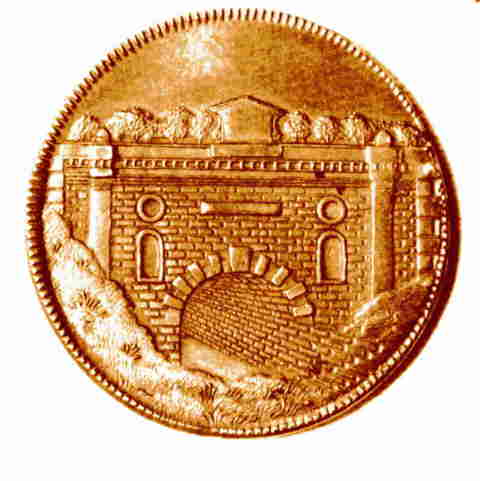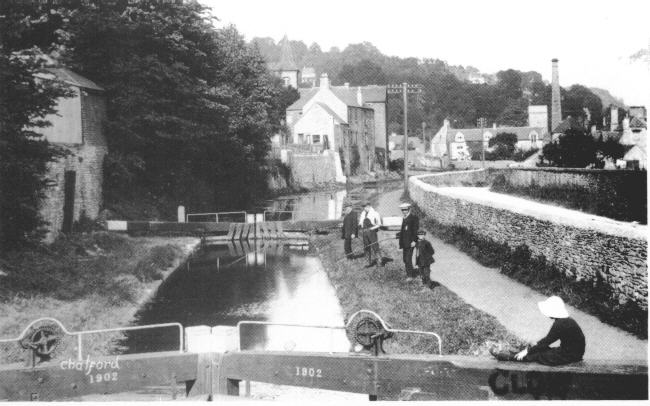


Ballinger Lock
on the Thames & Severn Canal, Chalford early in the last century
The waterway between the rivers Thames and Severn consists of two canals which meet end on in Stroud. The first to open was the Stroudwater Canal which was build between 1775 and 1779 but was itself the third in a series of attempts to link the woollen mills of Stroud to the River Severn. It is a broad canal designed to take Severn Trow of up to 68ft in length and a beam of 15 ft. These craft could carry cargos of up to 100 tons. The Thames & Severn Canal was built between 1783 and 1789 and was a much greater engineering feat as it climbed to Sapperton Tunnel which pierced the Cotswold Scarp. The tunnel was the longest built at the time of construction but was also of one of the largest in cross section.
The completion of the T&S Canal provided the first inland waterway route between London and the Midlands but the poor state of the Thames navigation upstream of Oxford was to greatly limit the success of the through route.
The opening of the Kennet and Avon Canal captured most of the Bristol trade and the coming of the railways in the mid 1840s started a slow decline in trade from which the canals would never recover.
The summit level of the T&S Canal always required careful maintenance and water supplies from the River Churn in Cirencester needed to be supplemented by pumping at Thames Head using a beam engine. As trade declined in the late 19th century, the water levels on the summit were frequently allowed to drop to levels which caused navigation to become impossible.
The T&S Canal's plight became worse when control of the canal company fell into the hands of the Great Western Railway who, in the 1890s, sought to close the eastern part of the canal. A Trust was formed to restore the canal but this ran out of money and Gloucestershire County Council took over. The GCC did reopen the canal at the turn of the century but the levels of trade were insufficient to justify maintenance costs and the last boat traversed the whole canal in 1911. The canal east of Chalford was abandoned in 1927 and the rest in 1933.
The Stroudwater Navigation did not suffer the high maintenance costs of its younger brother and successfully captured a considerable amount of local trade, mainly supplying coal to the many mills in the Stroud Valley. However, commercial traffic ceased in WW2 and the canal was formally closed in 1954 although The Company of Proprietors of the Stroudwater Navigation , its owners, continued to exist.
Both the T&S Canal and the Stroudwater Navigation are the subject of restoration proposals. The Cotswold Canals Trust has spear headed the campaign for 30 years and a recent breakthrough means that the project to fully restore these canals is being backed by the Cotswold Canals Partnership, the South West Regional Development Agency, the Environment Agency and all the Local Authorities along the whole route. Various sections of the canal have been restored to full navigation including some of the flight of locks at Eastington and progress on substantial sections of the rest is expected to be rapid once the work starts.